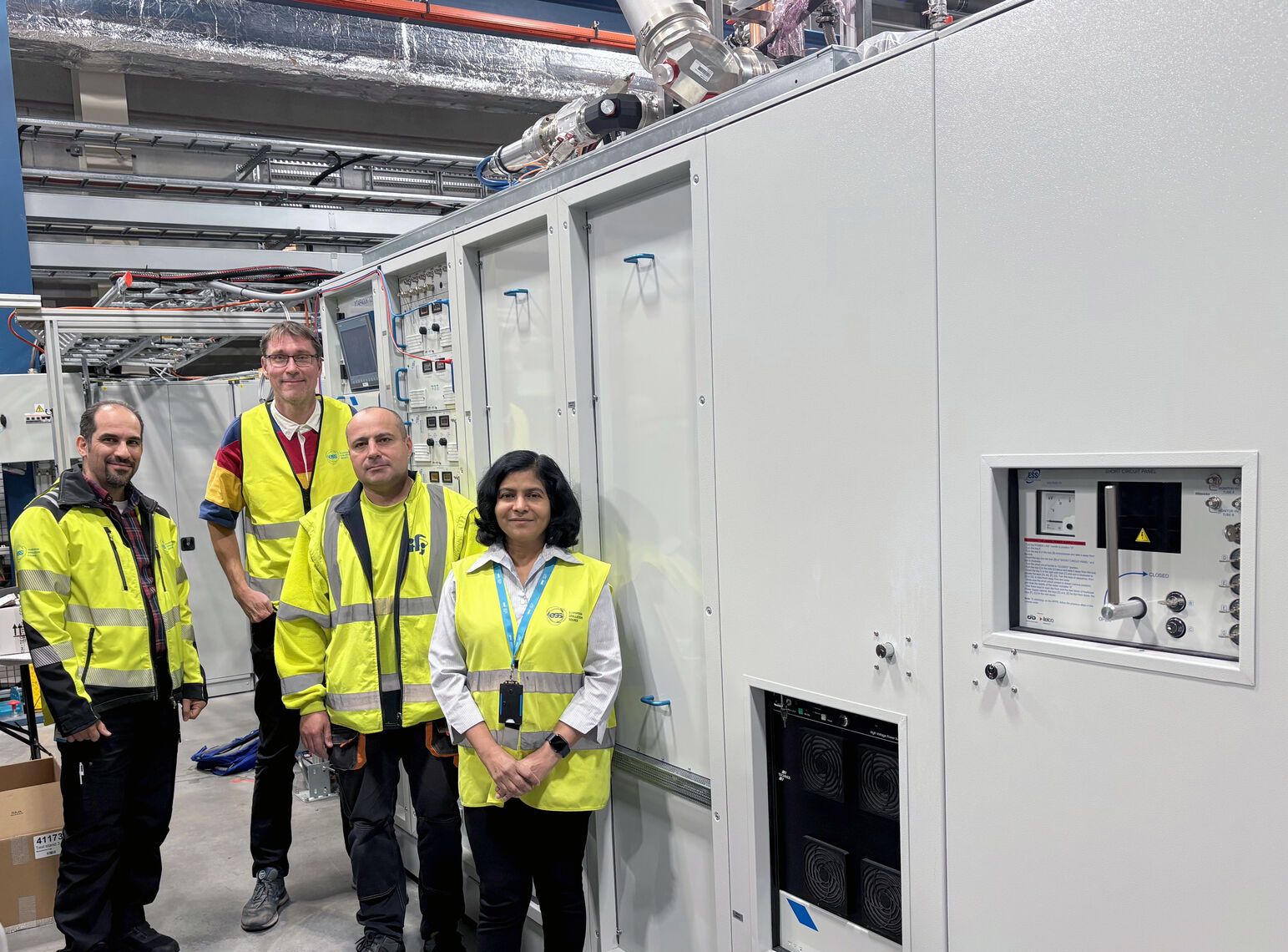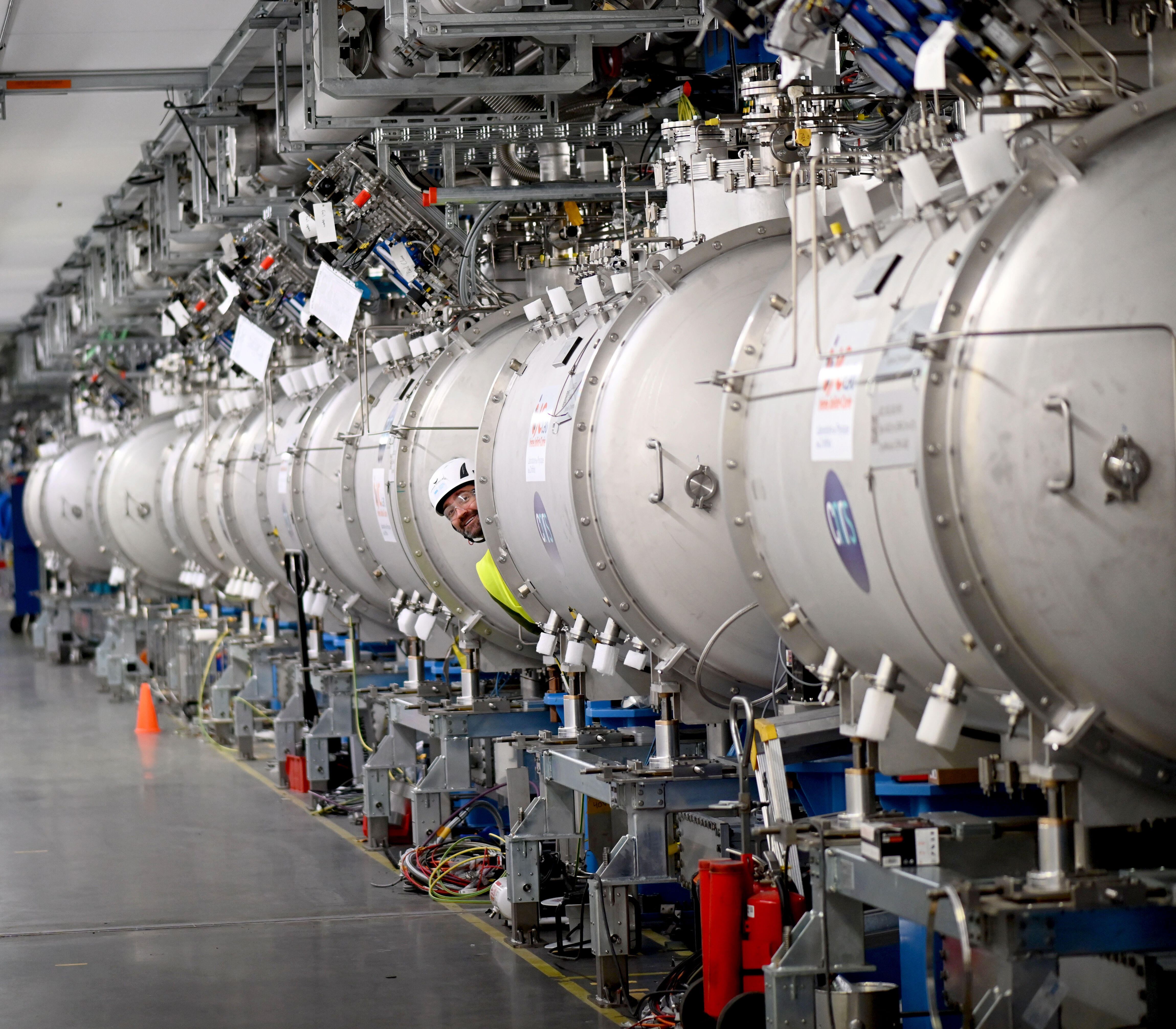
The installation and commissioning of all 26 Radio Frequency Power Stations (RFPSs) have been completed. This achievement, which required countless hours of preparation, testing and trouble-shooting, is attributed to the ESS Electrical Power Systems Group in the Accelerator Division in collaboration with the Integrated Control System (ICS) Division, with the stations delivered as an In-Kind contribution from Elettra, Italy.
The 26 RFPSs, each delivering 400 kW peak power at 352 MHz, have been successfully installed and commissioned in the klystron gallery. These stations are crucial for powering the spoke section of the superconducting linac, where they will boost proton beam energy from 90 MeV to 216 MeV before injection into the medium beta section of the linac.
The RFPSs were extensively tested, first in an on-site test stand (TS-3) at a peak power of 400 kW for at least 40 hours without triggering any interlocks. If the system experienced a failure or triggered an interlock during testing, it was retested for an additional 40 hours. After that, the systems were tested in-situ in the gallery, where they underwent at least 1,000 hours of testing at 380 kW peak power, with several units completing over 10,000 hours of soak testing. This rigorous testing process ensures reliable performance, minimising the risk of power interruptions and system failures during operation.
The systems were also used to test and certify the RF Distribution Systems (RFDS), Low Level RF systems (LLRF) and the RF local protection systems (LPS) for the spoke linac. Recently, the RFPSs were used during the warm coupler conditioning of the spoke section, confirming their functionality by successfully delivering RF pulses to the couplers through the waveguide system. The next step is to couple the RFPSs with the 26 spoke cavities, housed in 13 cryomodules, during cold commissioning.
During the upcoming accelerator commissioning, the RFPSs will provide power during Beam on Dump operation (scheduled for February 2025). Later, during Beam on Target, they will play an integral role in achieving the accelerator design requirements.
More updates from the ESS Accelerator, highlighting the road to beam commissioning:
- Installation and Testing of the 2 MW RF Scope Completed
- ESS Completes Installation of Beam Current Monitors in the Accelerator
- First Insertable Beam Stop installed in the ESS superconducting linac
- Magnets Ready to Focus and Steer the Proton Beam
- Warm Coupler Conditioning starts in the ESS Superconducting Linac



























